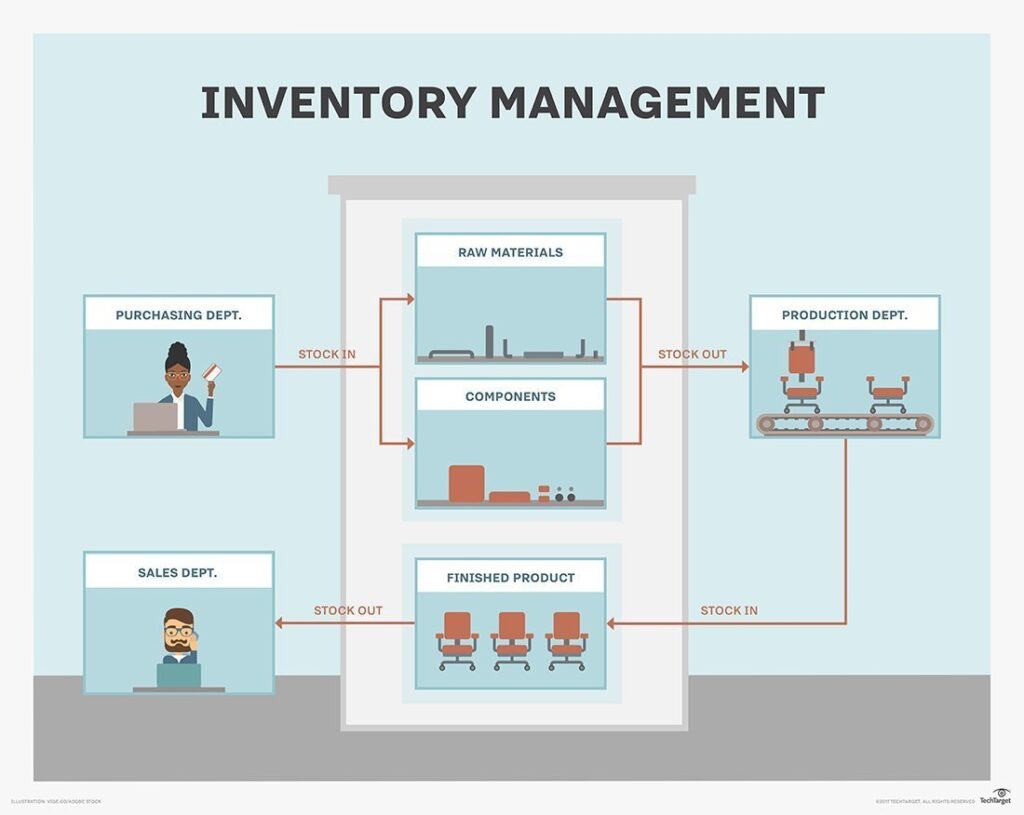INVENTORY MANAGEMENT
Inventory Management is the process of overseeing the flow of goods into and out of a company’s inventory. It involves the monitoring and control of stock levels, ordering and receiving inventory, and tracking inventory movements. Effective inventory management ensures that the right products are available at the right time, and in the right quantity, to meet customer demand while minimising costs associated with holding excess inventory.


Classification
Inventory items within a warehouse for a manufacturing concern are typically classified based on their characteristics and usage. Here are some common ways in which inventory items are classified:
Raw materials: Raw materials are the basic inputs that are required to manufacture a finished product. MRP systems typically classify raw materials based on their bill of materials (BOM) – a list of all the components and raw materials required to produce a finished product. Raw materials are classified based on their lead time (the time required to procure the material) and usage rate (the rate at which the material is consumed).
Work-in-progress (WIP): Work-in-progress items are the partially finished products that are in the process of being manufactured. MRP systems typically classify WIP items based on their routing – a sequence of operations required to manufacture a product. WIP items are classified based on the status of each operation, the processing time required for each operation, and the inventory levels of each component.
Finished goods: Finished goods are the final products that are ready for sale. MRP systems typically classify finished goods based on their demand forecast and production schedule. Finished goods are classified based on the demand rate, production lead time, and inventory levels.
Maintenance, repair, and operating (MRO) items: MRO items are the materials that are required to maintain the manufacturing equipment and facility. MRP systems typically classify MRO items based on their criticality and lead time. MRO items are classified based on the frequency of use, the lead time required for procurement, and the inventory levels.
Inventory Management
Inventory management is crucial for any manufacturing concern, including furniture manufacturing.
Effective inventory management ensures that a company has the right amount of raw materials, work in progress, and finished products to meet customer demand, without incurring unnecessary costs. Here are a few reasons why inventory management is essential in a furniture manufacturing concern:
- Efficient production: Furniture manufacturing requires the timely availability of raw materials and components. Without proper inventory management, a manufacturer may face production delays or even stoppages due to material shortages. By managing inventory levels efficiently, a manufacturer can ensure that there is always enough inventory on hand to meet production demands, without creating excess inventory.
- Meeting customer demands: In the furniture industry, customer demand can be unpredictable, and it can vary seasonally. Proper inventory management ensures that a manufacturer has the right amount of inventory to fulfill customer orders promptly. This helps to prevent lost sales due to inventory shortages and delays in fulfilling customer orders.
- Cost management: Managing inventory levels efficiently can help to minimize costs associated with storing and managing inventory. By avoiding overstocking, a manufacturer can save on storage costs, reduce the risk of inventory spoilage or obsolescence, and improve cash flow by investing in inventory only when necessary.
- Improved supply chain management: Proper inventory management helps to improve supply chain management by providing better visibility into inventory levels and usage patterns. This information can be used to optimize production schedules, reduce lead times, and streamline the supply chain.
